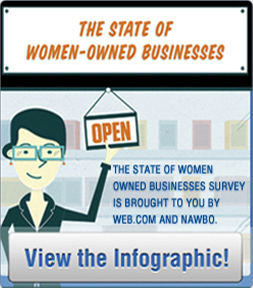The top 10 Tips to Hire Right! By Lorne Epstein
I have been recruiting for 14 years and wanted to share with you my top 10 tips for hiring the right people at your organization regardless of its size or frequency of hire. I have found over my 14 years of recruiting, these 10 tips can be applied to both the largest of organizations as well as the smallest. I would ask you to compare your costs of hiring an employee who never meets your businesses needs to that of taking a methodical approach to interviewing and hiring. They are not listed in a particular order and you may find some not applicable to your situation as they are written but the spirit of point is well worth examining for your specific situation.
- Source candidates who are as excited and interested in working for you as you are in hiring them. Never over sell candidates nor try and pull them from an employer just because they are successful there. There are many reasons someone is successful at a company that might not transfer to them working with your organization.
- Have several “hoops” for the candidates to jump through. I recommend using phone interviews, written screening questionnaires, on-line personality profiles, and more than one in-person interview. You can come up with more screens based on what the job is.
- Make a clear and speedy choice so that an offer can be made within a few days or less of the last in-person interview. The longer you take to extend and offer or rejection, the more it costs your employment brand. Set the candidates follow-up expectations by telling them what will happen after the interview and meet them.
- Be honest and up front with candidates by telling them the good and the bad things about working within your organization. This screens candidates and leaves them feeling respected and treated like a professional. I believe you have a moral obligation to be honest.
- Tell all candidates that you pass on to keep you in mind as their career develops. As candidates grow and develop they could make a better fit in the future. Work to make every candidate a client or add them to your newsletter, blog feed, etc.
- Apply a uniform, concise, and reproducible interview and hiring process. Ensure buy-in from everyone in the hiring process. Train your staff to interview in a cohesive fashion so each interviewer is drilling down into a specific aspect of the candidate. Leave no stone unturned so that when you are done interviewing you are a clear yes or no on extending an offer. If you leave the interview with a maybe you have not done your job.
- Focus on delivering an exceptional candidate experience. From the moment candidates hear about your company until they are hired or not, strive to give each candidate a Disney-esq experience so they are more likely to apply again in the future and recommend your company to their friends all of which increase your qualified pool of candidates.
- Write clear and accurate job descriptions and commit to what you want applicants to do. This involves writing job descriptions that tell the applicants everything they could possibly want to know. It will help create the screen to bring forward the best candidates. If you bait and switch with the job description it will create negative street credibility, poor moral and decreased productivity.
- Leverage your current talent pool to source applicants. Internal referrals put employees at stake for hiring candidates that perform and are a fit. Offer your employees a few thousand dollars to not only send their friends your way, but to qualify them before hand. Set up a process so employees screen candidates.
- Take some level of responsibility in preparing candidates when they come in to interview. Let them know who they are interviewing with, about how long it will take, what to expect, and what they expect to learn about from the candidate. Set the candidate up to win. The candidate still has to prepare and do their homework, throwing up obstacles limits the learning you will have during the interview.
Thanks for taking the time to read my article. Please comment below as I appreciate any feedback you have to offer. Pass this along to other business owners if you see fit. I am available to consult with your organization on applying these tips.
Lorne Epstein – CEO of Arlington Soho, has created one of the top (http://bit.ly/abSAl) job applications on Facebook called “InSide Job” (http://apps.facebook.com/insidejob). Lorne is the author of “You’re Hired! Interview skills to get the job”, a step-by-step guide on what to do before, during and after the interview to get the job you want. You can contact him at Lorne@MyInSideJobs.com.
Google+







 When I started my first business as an adult and left the warm blanket of a steady paycheck I also left the fuzzy fun of expense reports. Those detailed reports on excel spreadsheets full of stapled pages of photocopied receipts that we got paid back on eventually (usually in 2-4 weeks) and were part of the work experience when you traveled or did anything company/client related.
When I started my first business as an adult and left the warm blanket of a steady paycheck I also left the fuzzy fun of expense reports. Those detailed reports on excel spreadsheets full of stapled pages of photocopied receipts that we got paid back on eventually (usually in 2-4 weeks) and were part of the work experience when you traveled or did anything company/client related. In this next rule in our series “Rules for Entrepreneurs”, Rule #3 deals with the affliction of “Founderitis”. Don’t know what it is? Sound like a weird dermal disease?
In this next rule in our series “Rules for Entrepreneurs”, Rule #3 deals with the affliction of “Founderitis”. Don’t know what it is? Sound like a weird dermal disease?



